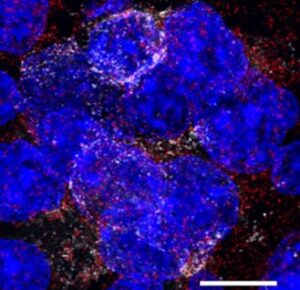Image based spatial transcriptomics to identify Beta Cell phenotypes in Type 1 Diabetes
Contact PI: Jing Liu, PhD, Indiana University-Purdue University at Indianapolis (R03 DK135457)
Start Date: May 1, 2023
NIH HIRN Gateway Investigator Award Recipient
Abstract
The objective of this work is to understand the molecular phenotype of long-living β cells in Type 1 Diabetes (T1D). While classic models of Type 1 Diabetes (T1D) pathogenesis paint a picture of near complete immune-mediated β cell destruction, accumulating evidence suggest that these remaining β cells may be protected from autoimmunity owing to the acquisition of a ‘de-differentiated’ phenotype that makes them less visible to the immune system. However, a consensus definition and the precise phenotype of a de-differentiated β cell has yet to be established. Moreover, the heterogeneity of such a phenotype between single β cells within and between islets and persons with T1D is unclear.
Our recent work on RNA imaging of human pancreatic tissues indicates that the transcriptome of β cells in T1D is spatially heterogeneous. This spatial disparity of the transcriptome leads to the hypothesis of this project, the spatial organization of RNAs and proteins can be used to identify β cell phenotypes associated with the persistence and survival of β cells in long-duration T1D. Therefore, this project aims to apply molecular imaging to human pancreatic tissues and interrogate the transcriptomic landscape and proteomic profiles of β cells at a level of single-molecule resolution. We will develop strategies for spatial-omics integration that allows for the correlation of transcriptomic signatures with proteomic differences for these β cell phenotypes.


